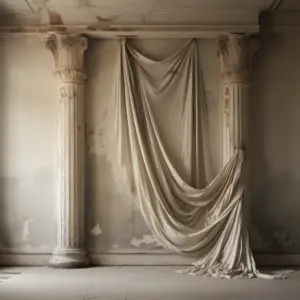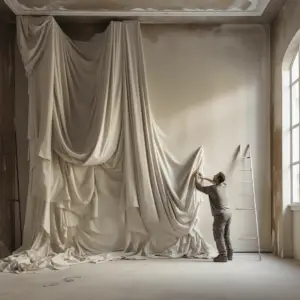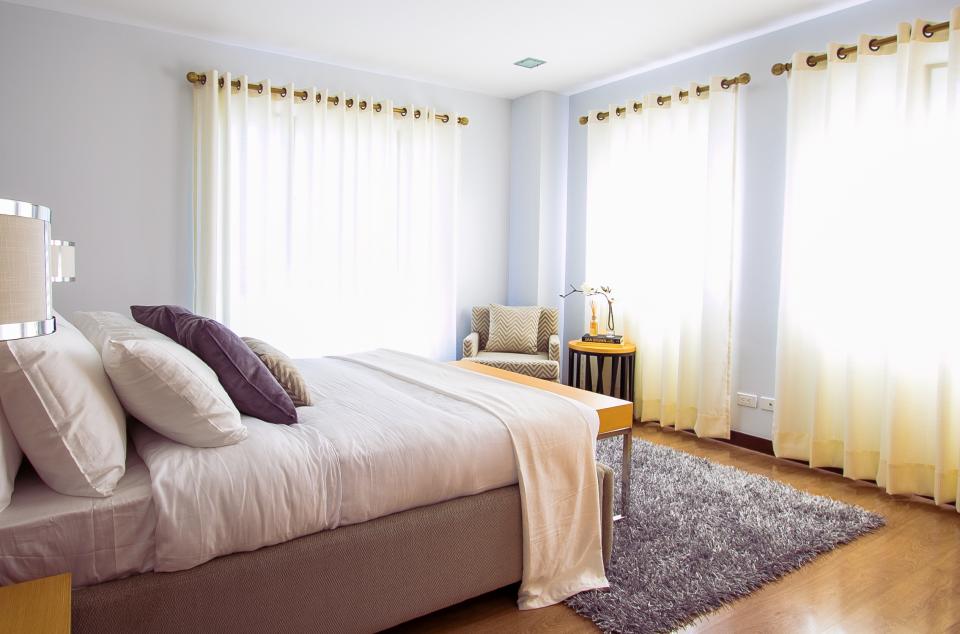Hanging on Delicate Plaster Walls, Plaster walls are a darling to almost every home design, as their balanced thermo-properties make them suitable for different climates. They are also easy to put up and dry quite fast so painters can have an easy time throughout the process.
However, things tend to get tricky for homeowners when it is time to hang the curtains. With the plaster walls’ rigidity, substandard drilling and hammering could bring a wall section down. This mostly happens in old plaster walls which most of the time have wood, lath, or brick behind them.
To hold the curtains in place, you’ll need to secure the screws onto the wood. If you can’t quite get to the wood, you can simply install a horror wall anchor to hold your new curtains and their brackets. If the curtains are heavy, you can get heavy-duty anchors just in case.
Table of Contents
Plaster Walls: Overview

This is a commonly used surface finish material for masonry and other types of walls. With modern builders embracing more detailed wall aesthetics, you might not easily notice plaster on recently built homes.
Plaster is mainly used as a finish material for interior and sometimes exterior walls. Other areas where you are likely to spot plaster include cornice and corbel moldings.
This technique was popular in the 1900s but as the years progressed, modern finish designs pushed it off the charts. Some builders however did not lose the art and have found a place for it in the modern construction setting.
They have found a way to refurbish old plaster walls to create magnificent interior art. If you dislike the old plaster walls in your inherited home, you can always have a few plaster masons add some fun to them
If you don’t have the time, then some well-selected and hanging wall curtains will spice things up for you. Hanging curtains on plaster walls can be tricky, any form of aimless hammering or screwing can be disastrous.
Wall curtain hanging is a skill that every modern homeowner should have-why pay a fixtures team when you can do it yourself.
How To Hang Curtains On Plaster Walls
Here’s a step-by-step guide on how to hung curtains on plaster walls.
Mark The Attachment Areas
Curtains go over windows, doors, and plain walls. The first step in this process is definitely marking the spots on the wall through which the screws will drill through. You’ll need a pencil marker, a measuring tape, and maybe a leveling tool.
Window curtains need around 4 inches of space above the sill-always to leave adequate space for the finials. If the curtains go on a plain wall, the amount of headspace depends on the home design.
Drill The Holes
This is the most delicate step; ensure the drill bit is well sized. Most people use the 3/16” drill bit although the size should coincide with the screws. Start the drilling slowly to avoid chipping-you don’t want sand all over the place.
If you don’t have studs on your walls you can opt for toggle or molly bolts- they offer a more firm hold in the long run. Match the hole sizes with the manufacturer’s specifications; larger holes make the bolts lose.
Mount The Brackets
This is where the toggle bolts come in-they hold the curtain brackets in place. The bracket has pre-drilled fixing holes-run the threaded screws through here. Each bolt is designed to hold the collapsing wing section of the toggle anchor. To hold it in place, run it around the bolt several times.
After fastening the wing device to the various holes on the wall, push the brackets against it until the wing spans open. Now, you can tighten the bolts to stabilize the brackets.
Thread-In The Molly Bolts
These hold the curtain brackets in place. Using a hammer, drive the molly bolts into the wall until the flanges hit the wall.
Draw the sleeves closer to the wall by turning the bolts clockwise. Now you can loosen the bolts and drive them back in, this time through the rod brackets. Ensure each bolt is firmly threaded in.
Put Up The Curtains
With the drilling stage out of the way and the brackets firmly installed, it’s now time to hang the curtains. Run the curtains through the rod and safely install them into the bracket.
Now you can adjust the curtains to your liking.
Reinforcing Curtain Rods On Plaster Walls
Your curtain rods may sag or bend in the middle. Unstable curtain rods do not pose any serious threat to occupants but their long-term damage to the walls can be expensive.
The reinforcing method depends on the rod’s length and material among other factors. Reinforcing curtain rods is mainly recommended for homes with heavy curtains and long windows.
Other homeowners choose to reinforce their curtain rods to prevent damage by toddlers and pets.
Curtain Rod Anchors And Extended Screws
Conventional curtain rod brackets are held in place by nails and screws. Reinforcing such brackets will need you to switch to stronger and longer fasteners.
If the wall’s studs are out of reach, you can use plastic anchors- they are safer than ordinary nails.
If you can reach the studs then a few long screws will get it done. Pre-select the screws to match the wall’s thickness-too large screws will cause cracks on the walls.
Get Strong Curtain Rods

There are curtain rods specifically built for heavy curtains. Check for terms like heavy-duty on the rods you buy. Curtain rods made of steel and brass are recommended for such tasks.
Weak curtain rods tend to droop or break over time-carrying the heavy weight over a long period can be overwhelming.
Curtain rods are available in various widths, if you have trouble selecting a strong rod simply buy the thickest.
Use Support Brackets
These are support fixtures installed 30 inches apart to secure curtain rods. They are cheap and very effective- a weak 60 inches curtain rod will do just fine with just 2 support brackets.
Bottom Line
Tasks like curtain hanging are simple but for new homeowners, it could easily be their worst nightmare. The idea to hammer the curtains onto the wall is tempting but the wall damage would be disappointing. The best way to get these pieces of cloth onto the walls is to carefully screw in the brackets and install the curtain rods with the curtains-remember to use strong curtain rods.


